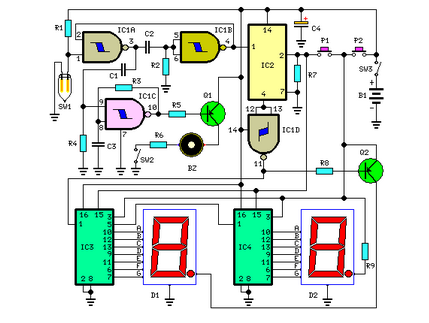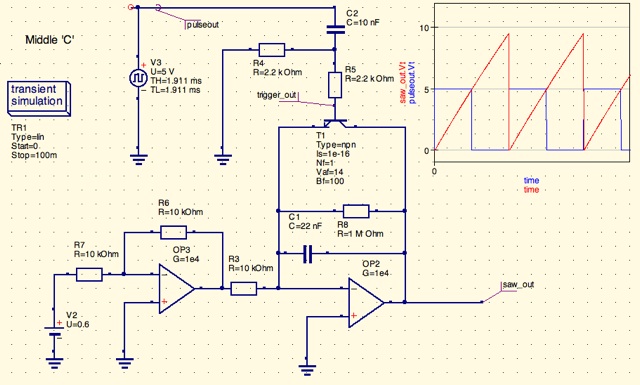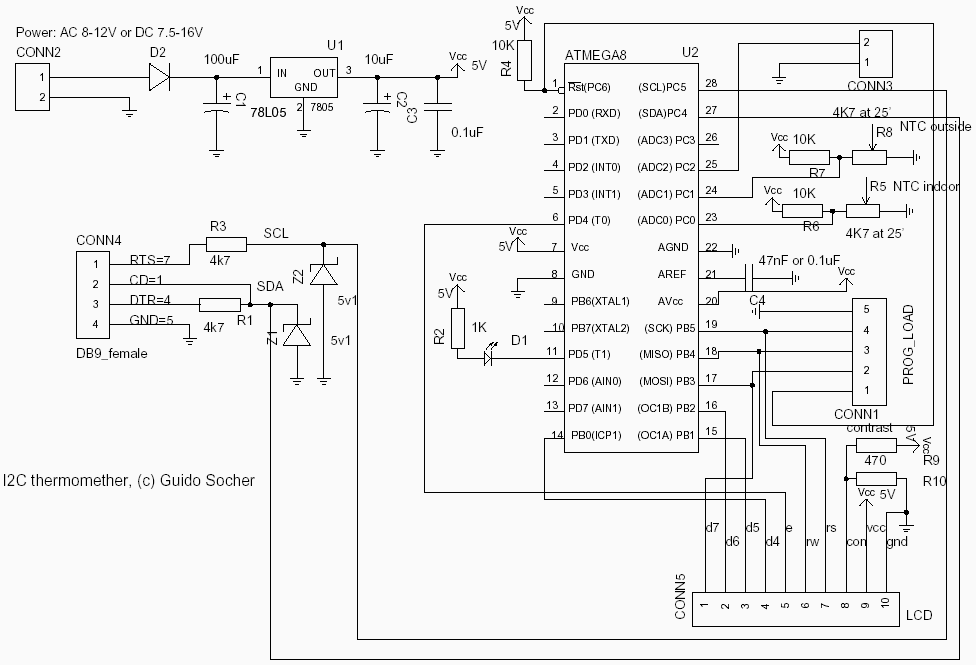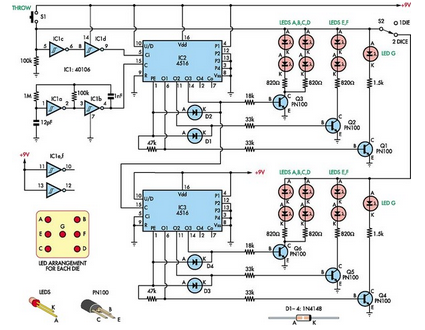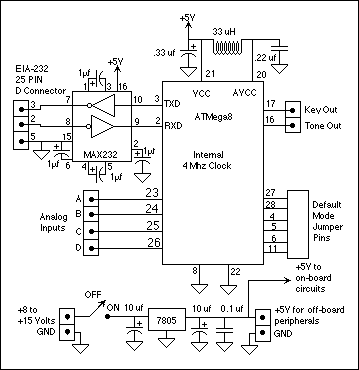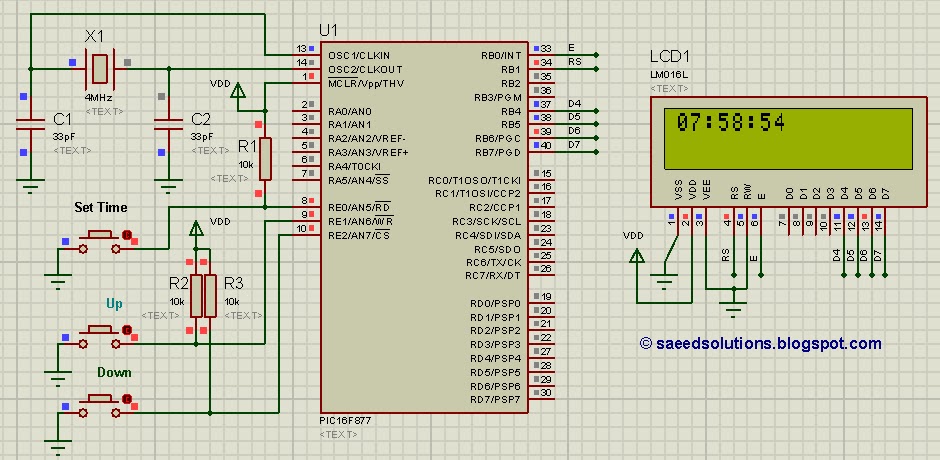
Digital Guitar Tuner
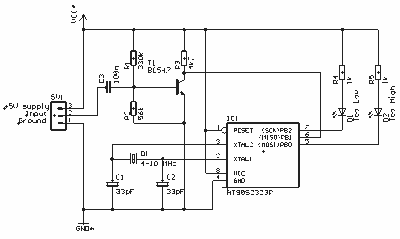
The circuit is a simple, but accurate Digital Guitar Tuner. It samples the input, which can be directly from the mics of an electric guitar, or from a microphone, if you're using an acoustic guitar. It can of course also be used for tuning other instruments. The samples are then checked against stored values for the strings, and the two LEDs will show the tuning status - "Too Low", "Too High" or "In Tune" when both LEDs are lit.
The Digital Guitar Tuner circuit operates by utilizing a microcontroller or a dedicated frequency detection IC to analyze the frequency of the incoming audio signal. The circuit typically includes an audio input stage that may consist of an operational amplifier configured as a preamplifier to boost the signal from the guitar or microphone.
Once the signal is amplified, it is fed into an analog-to-digital converter (ADC) if a microcontroller is used, or directly to a frequency detection circuit. This component is responsible for determining the fundamental frequency of the audio signal, which corresponds to the pitch of the note being played.
The circuit is programmed with reference frequencies for standard guitar tuning (E2, A2, D3, G3, B3, E4) or other instruments as required. The detected frequency is compared against these stored values. If the detected frequency is lower than the reference frequency, one LED (indicating "Too Low") will illuminate. Conversely, if the detected frequency is higher, the other LED (indicating "Too High") will light up. When the detected frequency matches the reference frequency, both LEDs will illuminate, indicating that the instrument is in tune.
Additional features may include a display unit, such as a seven-segment display or an LCD, to provide a visual representation of the detected pitch and its deviation from the target frequency, enhancing user interaction. Power supply considerations for the circuit can range from battery operation to USB power, depending on the intended application and portability requirements.
Overall, the Digital Guitar Tuner circuit is a valuable tool for musicians, providing an accurate and easy-to-use solution for tuning a variety of stringed instruments.The circuit is a simple, but accurate Digital Guitar Tuner. It samples the input, which can be directly from the mics of an electric guitar, or from a microphone, it you`re using an acoustic guitar. It can ofcourse also be used for tuning other instruments. The samples are then checked against stored values for the strings, and the two LED`s will show the tuning status - "Too Low", "Too High" or "In Tune" when both LED`s are lit.
🔗 External reference
The Digital Guitar Tuner circuit operates by utilizing a microcontroller or a dedicated frequency detection IC to analyze the frequency of the incoming audio signal. The circuit typically includes an audio input stage that may consist of an operational amplifier configured as a preamplifier to boost the signal from the guitar or microphone.
Once the signal is amplified, it is fed into an analog-to-digital converter (ADC) if a microcontroller is used, or directly to a frequency detection circuit. This component is responsible for determining the fundamental frequency of the audio signal, which corresponds to the pitch of the note being played.
The circuit is programmed with reference frequencies for standard guitar tuning (E2, A2, D3, G3, B3, E4) or other instruments as required. The detected frequency is compared against these stored values. If the detected frequency is lower than the reference frequency, one LED (indicating "Too Low") will illuminate. Conversely, if the detected frequency is higher, the other LED (indicating "Too High") will light up. When the detected frequency matches the reference frequency, both LEDs will illuminate, indicating that the instrument is in tune.
Additional features may include a display unit, such as a seven-segment display or an LCD, to provide a visual representation of the detected pitch and its deviation from the target frequency, enhancing user interaction. Power supply considerations for the circuit can range from battery operation to USB power, depending on the intended application and portability requirements.
Overall, the Digital Guitar Tuner circuit is a valuable tool for musicians, providing an accurate and easy-to-use solution for tuning a variety of stringed instruments.The circuit is a simple, but accurate Digital Guitar Tuner. It samples the input, which can be directly from the mics of an electric guitar, or from a microphone, it you`re using an acoustic guitar. It can ofcourse also be used for tuning other instruments. The samples are then checked against stored values for the strings, and the two LED`s will show the tuning status - "Too Low", "Too High" or "In Tune" when both LED`s are lit.
🔗 External reference
